Eventually I found my way to the front door and got into the building. It turns out that all outside doors except the main entrance are locked from inside and out. From what I observed, you need a code to get in or even to leave.
Before I describe the inside, I should mention the “Golden Boy” perched atop the dome. He is supposed to represent the glories of the province:
I must say that he reminds me more of the figure of Mercury in the FTD florist delivery service, but tastes vary.
Capitol buildings have a kind of sameness to them. They are all made out of marble and they are all designed to impress rather than to enchant or amuse. There’s a kind of sameness. I know three capitol buildings well—California, Wisconsin, and the US Capitol in Washington, D.C., and I have to admit that I would be hard pressed to distinguish any of them from a random photograph. Besides exuding the same sameness, the extensive use of marble in each capitol ultimately becomes counterproductive because it makes for the same look, everywhere. Hard to be impressive when everything looks the same.
The Legislative Building in Winnipeg has similar challenges to the viewer. It’s impressive, it’s made out of expensive and exotic marbles, and everything glistens and reflects. In other words, it’s pretty much like every other capitol, though it does have some quirky features of interest. I only have a single photograph of my own for this post, because for places like capitols, you get better views with stock photographs.
The first things you find, as in so many Midwestern buildings, is a vestibule where you can hang your winter coats. The Eskimo Museum in Churchill had one; the Parliament building in Winnipeg has one. Then you walk through and are supposed to be impressed by the massive marble staircase:
 Yes, those are two bison guarding the grand staircase. Male bison. Very definitely male bison. Of that there is no confusion:
Yes, those are two bison guarding the grand staircase. Male bison. Very definitely male bison. Of that there is no confusion:
Legend has it that they had to flood the flood in winter to avoid damaging the rare marble of the staircase and slide them in on blocks of ice. Might be true. True or false, it’s a good story.
The Grand Staircase leads up to the rotunda with the dome. It probably won’t surprise you to hear that I ignored that and charged straight ahead. It brought me to an odd circular room:
Called the Pool of the Dark Star, it apparently is named for an octagonal star on the floor. When you stand in the center of that star, you can look up and see the rotunda through a circular hole in the floor above:
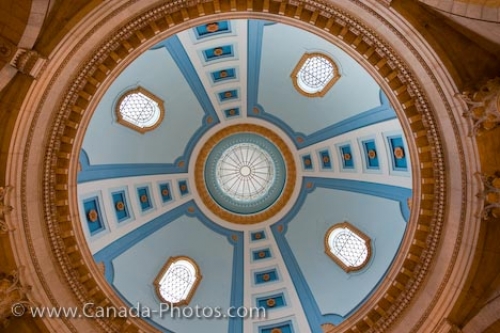 Photographing a circular room so you get the feel for it is challenging. The following picture gets more of a sense of the roundness of the room, but makes you dizzy.
Photographing a circular room so you get the feel for it is challenging. The following picture gets more of a sense of the roundness of the room, but makes you dizzy.
This has been a perpetual problem in depicting circular structures. I’ve added an addendum at the end of this post showing you how a good drawing or painting can often give you a better sense of circularity than can photographs.
The Parliament was constructed between 1912 and 1920. I suspect that all work stopped on it during World War I (1914-18, or 1914-19, as the Patria monument at the Bank of Montreal suggests). That would be a great history paper for a high school student or undergrad to write: find a building like the Parliament and document the delays and changes. I know that WWI had seriously affected the economy in the US by 1916, as we were busy cashing in European securities and selling everything we could. Just as with the current construction boom in China restricting availability of things like concrete worldwide, WWI was causing shortage even in non-belligerents like the US.
Anyway, the Parliament is covered with Masonic symbols. There’s a special tour just for that, and the Internet tour offered by the Manitoban government. covers some of it. Frank Albo has written a book about the Masonic influences, and discussed much of it on his website. Most descriptions make a big deal that the room containing the Grand Staircase is a perfect cube, and that the staircases have 3 flights of 13 steps, which supposedly has some mystical consequence. (To me, 3 times 13 is 3/4’s of a deck of cards, or 39, Jack Benny’s perennial birthday. YMMV.)
The rotunda is at the top of the stairs, and can be viewed from galleries on the third (or fourth) floor:
Artistically, the most interesting feature is a painting depicting the experience of the Canadian soldier as the Passion of Christ from Christian literature and art:
The painting is on canvas that is then attached to the wall. Called manouflage, it can be removed for cleaning and restoration, which is exactly what was happening when I visited. The area where it was attached to the wall was covered with canvas tarps. It looked exactly like a tabernacle or altar being kept under wraps, one of the more startling uses of religious imagery I’ve seen for secular purposes.
So that’s about it. Nice building. I think I liked the bison the best, because they were so incongruous with the rest of the building. Power presents itself to the public and hopes to be impressive. You be the judge.
Problems in depicting circular structures
Like most art history students, I grew up knowing the Pantheon in Rome from Panini’s post-Renaissance painting (I think he was 17th Century, but frankly don’t remember):
Most art historians argue that Panini’s is the best depiction of the Parthenon available.
I decided to investigate to see what’s available on the Internet, and am convinced my professors were right.
You can get the first couple of layers that suggest the dome, but don’t capture it:
Or you can use a wide-angle lens that sort of gets the roundness, but is distorting the linear elements on the floor.
Your final choice is to emphasize the dome, where you lose contact with the floor.
No matter what you choose, though, you can’t capture it all. By accepting some visual distortions, Panini does a better job of capturing the miracle of a circular structure than photography can. Paradoxes abound, even in our technological times.




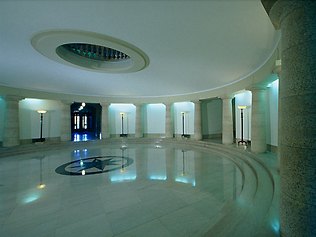

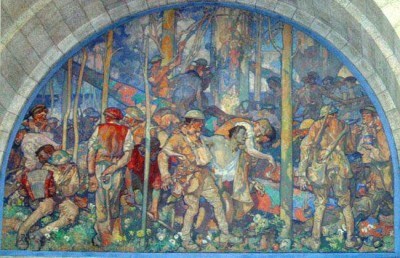
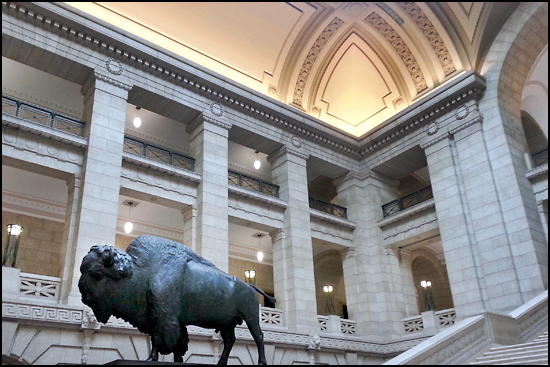
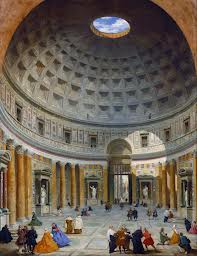

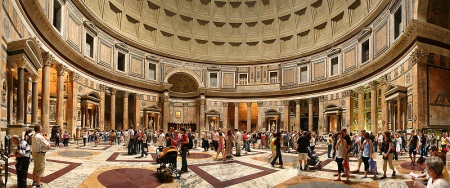

Pingback: Bear wire | LessThan3ley